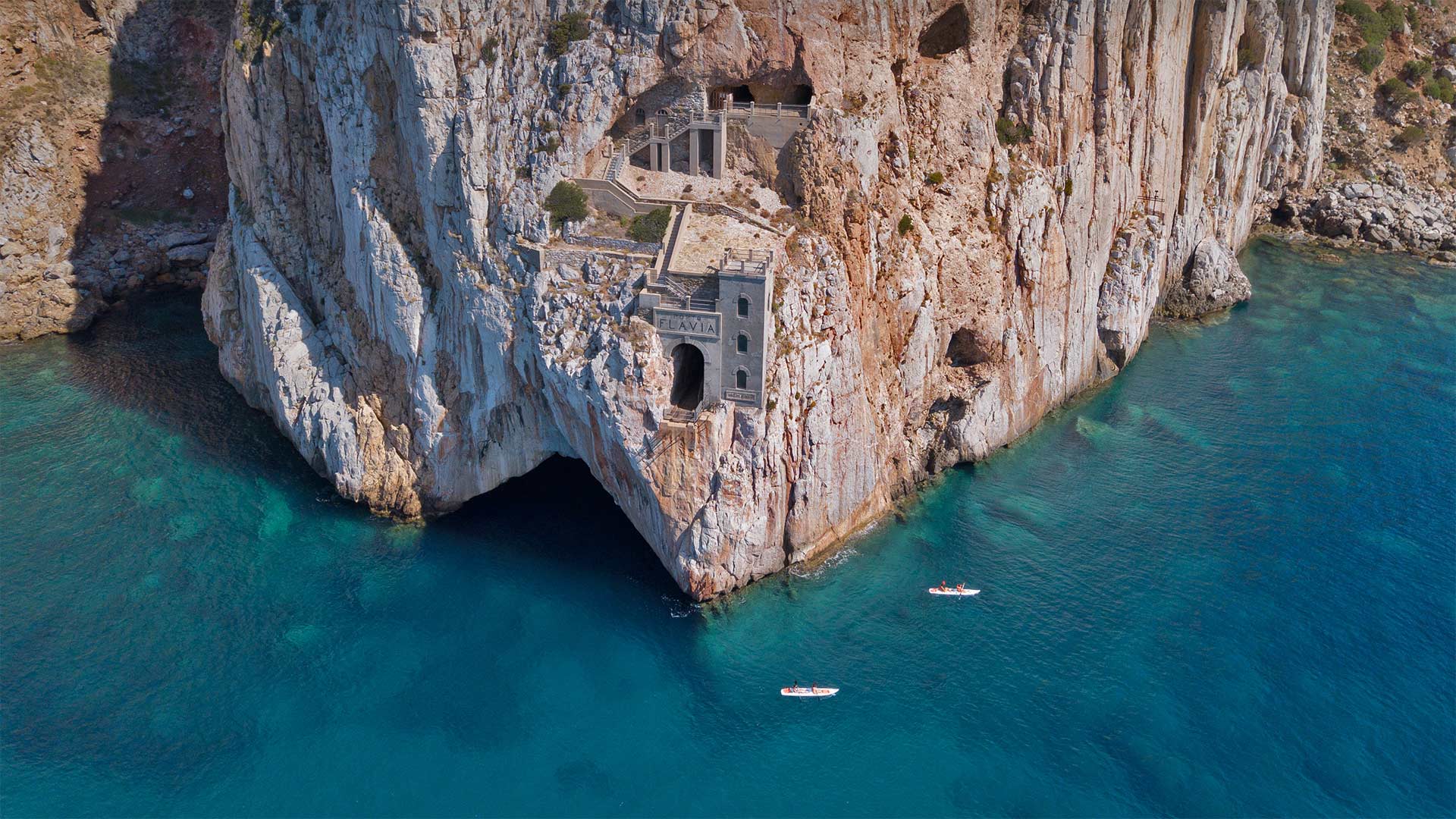弗拉维亚港,意大利撒丁岛 Porto Flavia, Sardinia, Italy (© Visualframing/Adobe Stock)

弗拉维亚港,意大利撒丁岛 Porto Flavia, Sardinia, Italy (© Visualframing/Adobe Stock)
A cliffside harbor in Sardinia
The mining industry in Sardinia, Italy was booming in the early 20th century, as European nations looked to reconstruct from the damages of World War I. But Sardinian faced myriad logistical issues trying to export the zinc, lead and other minerals that were in high demand. Miners on the Italian island were using modern techniques to extract more and more ore, but it wasn't until 1924, when engineer Cesare Vecelli designed and built the mining hub along the cliffs in Porto Flavia, that getting product off the island matched their ability to extract it.
Before Vecelli's architectural marvel at Porto Flavia began operating, ore was often hand carried in wicker baskets and loaded by workers onto awaiting boats, a process that was slow, expensive, and often dangerous. But Vecelli's innovation allowed miners to lower ore directly onto ships waiting in the harbor below, saving time and cutting costs by up to 70%. Porto Flavia, which Vecelli named after his daughter, wasn't purely an exercise in productivity. The engineer added design flourishes including a concrete tower, as well as an arched doorway and windows, giving the port a certain elegance not normally associated with a mining hub. These days, Porto Flavia lives on as a UNESCO-protected tourist attraction.
撒丁岛的悬崖边港口
意大利撒丁岛的采矿业在20世纪初蓬勃发展,因为欧洲国家希望从第一次世界大战的破坏中重建。但撒丁岛在出口锌、铅和其他需求量大的矿物时面临着无数的物流问题。意大利岛上的矿工们正在使用现代技术开采越来越多的矿石,但直到1924年工程师塞萨尔·维切利(Cesare Vecelli)沿着弗拉维亚港(Porto Flavia)的悬崖设计并建造了采矿枢纽,从岛上获取的产品才与他们的开采能力相匹配。
在维切利在弗拉维亚港的建筑奇迹开始运作之前,矿石通常用柳条筐手工搬运,由工人装载到等待的船只上,这一过程缓慢、昂贵,而且往往很危险。但维切利的创新使采矿者能够直接将矿石卸到下面港口等待的船只上,从而节省时间并将成本降低70%。维切利以其女儿的名字命名的弗拉维亚港,并不是纯粹的生产力运动。这位工程师还增加了一些设计元素,包括一座混凝土塔,以及一个拱形的门道和窗户,给港口带来了一种通常与采矿枢纽不相关的优雅。如今,弗拉维亚港仍然是联合国教科文组织保护的旅游胜地。
评论已关闭